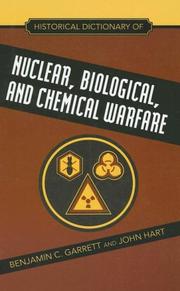| Listing 1 - 10 of 1254 | << page >> |
Sort by
|
Book
ISBN: 9401207410 Year: 2012 Publisher: Amsterdam : Rodopi,
Abstract | Keywords | Export | Availability | Bookmark
 Loading...
Loading...Choose an application
- Reference Manager
- EndNote
- RefWorks (Direct export to RefWorks)
Cultural transformation tends to be described in one of two ways: either with reference to what comes about, is created or emerges in the process of change or with reference to what is destroyed or obscured in that process. Within a performative paradigm, that is, from a perspective which focuses on the manner in which social and cultural reality is constituted or brought about by human activity, theorists have, in recent years, tended to underline the productive aspects of transformation by emphasising the creative thrust of performative processes and events. In so doing, this perspective has tended to overlook the extent to which a certain destructive element may in fact be inherent to such performative processes. Drawing upon a range of historical and contemporary constellations of socio-cultural change and a variety of different types of events and activities, the articles in this volume describe different forms of destruction and their respective role in processes of transformation. Their shared aim is to explore the manner in which destructivity, such as the destabilisation and destruction of orders, subjects and bodies, can be grasped by concepts of performativity. In other words, to what extent may a certain destructive dynamic be inscribed within this very notion?

ISBN: 0810854848 9780810854840 Year: 2007 Publisher: Lanham Scarecrow
Abstract | Keywords | Export | Availability | Bookmark
 Loading...
Loading...Choose an application
- Reference Manager
- EndNote
- RefWorks (Direct export to RefWorks)
Weapons of mass destruction --- Weapons of mass destruction --- History
Book
Year: 1621 Publisher: [Imprinted at London : By Bonham Norton, and Iohn Bill, printers to the Kings most excellent Maiestie,
Abstract | Keywords | Export | Availability | Bookmark
 Loading...
Loading...Choose an application
- Reference Manager
- EndNote
- RefWorks (Direct export to RefWorks)
eebo-0113

ISBN: 2910550737 9782910550738 Year: 1999 Volume: 5 Publisher: Bordeaux: Confluences,
Abstract | Keywords | Export | Availability | Bookmark
 Loading...
Loading...Choose an application
- Reference Manager
- EndNote
- RefWorks (Direct export to RefWorks)
Vandalism --- Art --- Vandalisme --- History --- Mutilation, defacement, etc. --- Histoire --- Mutilation --- France --- Destruction and pillage --- Destruction et pillage --- Destruction and pillage.
Book
Year: 2011 Publisher: Maxwell Air Force Base, Ala. : Air University, USAF Counterproliferation Center,
Abstract | Keywords | Export | Availability | Bookmark
 Loading...
Loading...Choose an application
- Reference Manager
- EndNote
- RefWorks (Direct export to RefWorks)
Weapons of mass destruction --- Disasters --- Emergency management
Book
Abstract | Keywords | Export | Availability | Bookmark
 Loading...
Loading...Choose an application
- Reference Manager
- EndNote
- RefWorks (Direct export to RefWorks)
eebo-0018
Charles --- Great Britain --- History --- Destruction and plunder
Book
Year: 2007 Publisher: Washington, D.C. : Center for the Study of Weapons of Mass Destruction, National Defense University Press,
Abstract | Keywords | Export | Availability | Bookmark
 Loading...
Loading...Choose an application
- Reference Manager
- EndNote
- RefWorks (Direct export to RefWorks)
Book
Year: 2020 Publisher: Riga [Latvia] : NATO Strategic Communications Centre of Excellence,
Abstract | Keywords | Export | Availability | Bookmark
 Loading...
Loading...Choose an application
- Reference Manager
- EndNote
- RefWorks (Direct export to RefWorks)
This report discusses terrorist and armed group activity in the Libyan Fezzan (southwestern Libya) as well as these groups' ties to local tribes. Since the downfall of Mu'ammar Qaddafi in 2011, Libya has become a hotspot for militias, criminal gangs, and jihadists. The geographic focal points of terrorist groups are shifting, however. In the northern part of the country, the territorial concentrations of these groups were largely defeated by 2017; conversely, in the Fezzan and the neighbouring countries of the Sahel, jihadi groups have proven resilient. In spite of international airstrikes and attacks by some Libyan forces (notably, the Libyan National Army or LNA), jihadi groups have survived, adapted their communication tactics to the local context and even engaged in lucrative criminal activities across the Fezzan-Sahel borders, further blurring the lines between jihadist and criminal networks.
Terrorism. --- Security, International. --- Weapons of mass destruction.
Book
Year: 2007 Publisher: [Washington, D.C.] : U.S. Air Force,
Abstract | Keywords | Export | Availability | Bookmark
 Loading...
Loading...Choose an application
- Reference Manager
- EndNote
- RefWorks (Direct export to RefWorks)
Book
Year: 2009 Publisher: Washington, D.C. : Center for the Study of Weapons of Mass Destruction, National Defense University Press,
Abstract | Keywords | Export | Availability | Bookmark
 Loading...
Loading...Choose an application
- Reference Manager
- EndNote
- RefWorks (Direct export to RefWorks)
Weapons of mass destruction. --- Disarmament. --- Arms control.
| Listing 1 - 10 of 1254 | << page >> |
Sort by
|

 Search
Search Feedback
Feedback About UniCat
About UniCat  Help
Help News
News